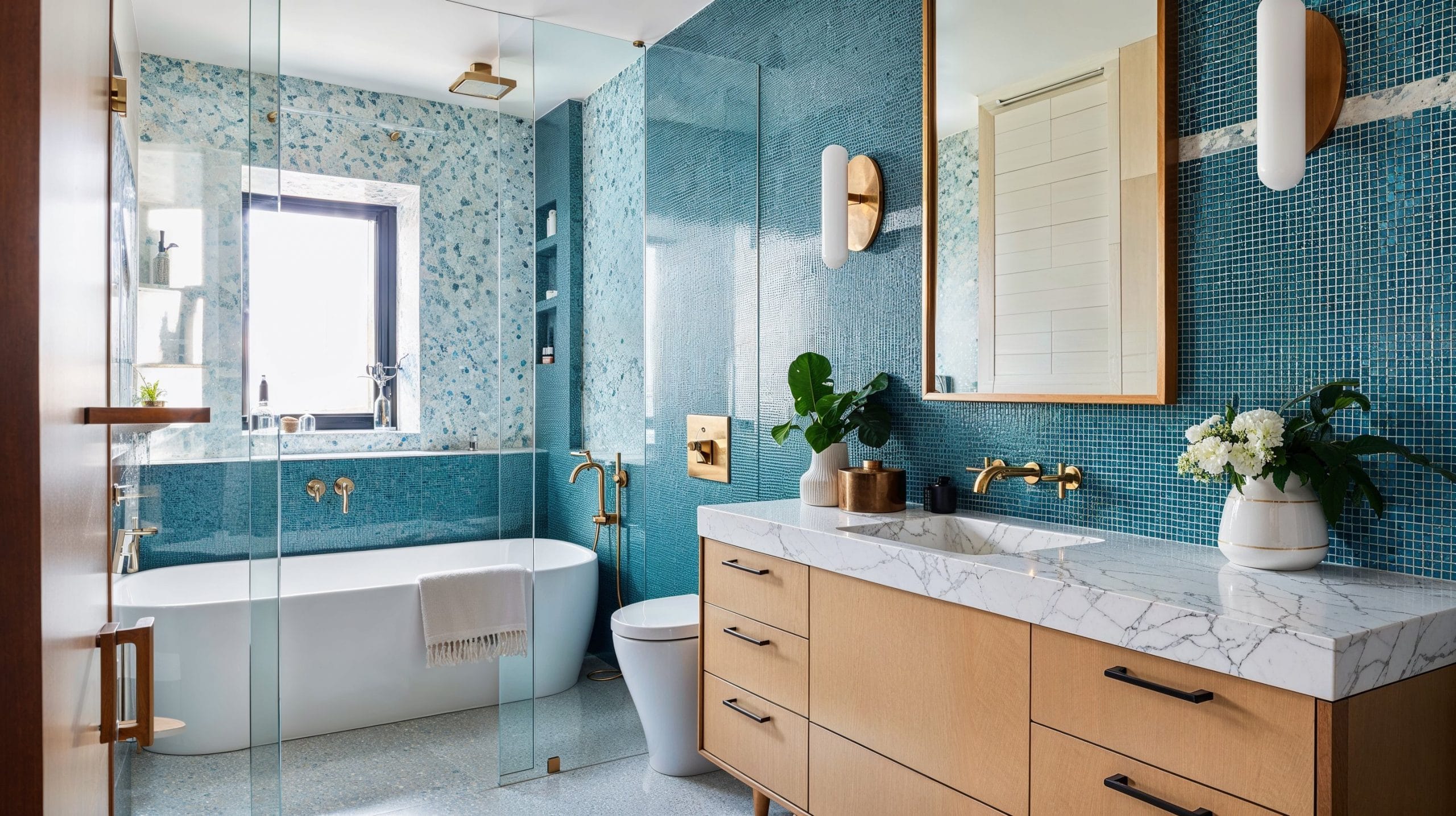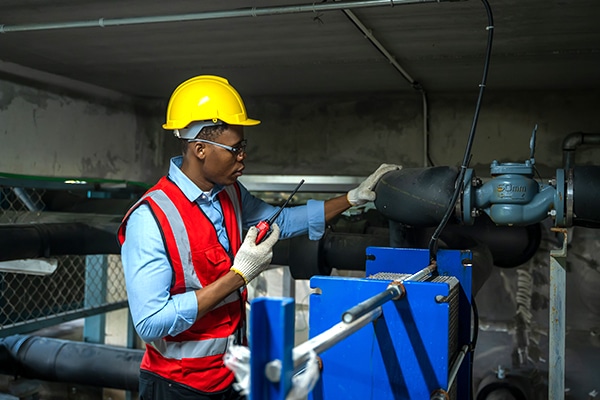This great article underneath pertaining to The Future of Plumbing: Trends and Innovations to Watch is truly motivating. Don't bypass it.

Intro
The plumbing industry is undergoing a transformative phase driven by technological developments and growing concerns for sustainability and effectiveness. This short article checks out emerging fads and developments shaping the future of pipes.
Smart Pipes Solutions
Integrating smart modern technology into pipes systems enables remote surveillance, leak discovery, and automated maintenance. Smart sensors and IoT (Web of Points) devices enable home owners and plumbing professionals to keep an eye on water use and discover problems in real-time, bring about extra efficient resource administration and positive maintenance.
Water Effectiveness Solutions
With raising focus on water conservation, ingenious services are being established to reduce water wastage in plumbing systems. High-efficiency fixtures, greywater recycling systems, and smart watering controllers are amongst the innovations helping consumers decrease their water impact while maintaining convenience and benefit.
Lasting Materials
The shift in the direction of sustainability reaches pipes products, with a growing choice for environment-friendly alternatives. Eco-friendly piping materials, such as PEX (cross-linked polyethylene) and HDPE (high-density polyethylene), offer durability and resistance to rust without endangering ecological integrity.
Predictive Upkeep
Anticipating maintenance techniques leverage information analytics and machine learning algorithms to prepare for and prevent pipes issues prior to they happen. By assessing historical information and performance metrics, predictive upkeep algorithms can recognize patterns and anomalies, allowing positive interventions to avoid pricey fixings and disturbances.
Enhanced Fact in Plumbing
Enhanced Fact (AR) innovation is changing pipes by supplying service technicians with real-time aesthetic assistance for repairing and repair work tasks. AR-enabled smart glasses or mobile applications overlay digital info onto the physical setting, assisting plumbers imagine pipe formats, recognize surprise leaks, and perform repair services with precision.
Influence of 3D Printing
The development of 3D printing has introduced new possibilities in producing pipes elements. From custom-made components to intricate pipe installations, 3D printing allows for quick prototyping and on-demand production, reducing preparations and enabling higher modification in pipes design.
Health and Safety Qualities
In reaction to increased problems for health and safety, plumbing components are including attributes such as antimicrobial surface areas, touchless operation, and self-cleaning mechanisms. These technologies not just enhance hygiene however also promote individual convenience and benefit.
Hygiene-focused Components
Touchless taps, self-sanitizing bathrooms, and antimicrobial surface areas are coming to be significantly prevalent in domestic and commercial settings, minimizing the threat of bacterium transmission and promoting a cleaner, much healthier setting.
Water High Quality Monitoring
Improvements in water quality tracking innovations enable property owners to monitor the purity and safety of their water supply in real-time. Smart water quality sensing units can discover pollutants, pH degrees, and temperature level variants, empowering users to take proactive procedures to make certain water safety and security.
Remote Pipes Solutions
Remote diagnostics and digital help are changing the way pipes solutions are delivered. Through video clip conferencing and remote access innovations, plumbing professionals can fix concerns, offer guidance for DIY fixings, and even do remote evaluations, supplying greater ease of access and convenience to house owners.
Obstacles and Opportunities
While pipes technologies hold tremendous promise, they additionally present difficulties such as data personal privacy problems, regulative compliance, and the need for labor force training. Dealing with these challenges calls for partnership between market stakeholders and regulatory bodies to guarantee risk-free and liable application of new innovations.
Governing Landscape
Regulatory frameworks play a crucial duty in shaping the fostering of plumbing technologies, with requirements and codes regulating whatever from water effectiveness to product security. As modern technologies remain to develop, governing bodies must adapt to make sure consumer defense and ecological stewardship.
Future Overview
The future of pipes is defined by continued advancement and combination with various other markets such as IoT, renewable resource, and structure automation. By welcoming lasting methods, leveraging emerging modern technologies, and prioritizing user-centric design, the pipes industry is poised to resolve the advancing needs of society while decreasing its ecological footprint.
Conclusion
To conclude, the future of pipes is specified by a convergence of modern technology, sustainability, and user-centric layout. By welcoming clever remedies, lasting materials, and proactive upkeep techniques, the plumbing sector can boost effectiveness, promote safety, and add to an extra sustainable future.
The Future of Plumbing: Trends and Innovations to Watch
Introduction to Future Plumbing Trends
The future of plumbing is being shaped by several key factors, including technological advancements, environmental concerns, and changing consumer expectations. These factors are driving the development of new products, services, and practices that enhance the efficiency, sustainability, and convenience of plumbing systems.
Key Trends and Innovations in Plumbing
Smart Plumbing Systems: The integration of smart technology into plumbing systems is transforming the way we manage water usage and detect issues. Smart leak detectors, automated water shut-off valves, and smart faucets are just a few examples of how technology is enhancing plumbing systems. These devices provide real-time data and remote control capabilities, allowing homeowners to monitor and manage their water usage more effectively. Water Conservation and Efficiency: With increasing concerns about water scarcity, there is a growing emphasis on water conservation and efficiency. Innovations such as low-flow fixtures, greywater recycling systems, and rainwater harvesting are becoming more popular. Plumbers are adopting these technologies to help customers reduce their water consumption and save on utility bills. Sustainable Materials: The use of sustainable materials in plumbing systems is gaining traction. This includes the adoption of recyclable and biodegradable materials, as well as the use of non-toxic and eco-friendly products. Sustainable materials help reduce the environmental impact of plumbing systems and promote long-term sustainability. Energy-Efficient Water Heaters: Advances in water heating technology are leading to the development of more energy-efficient systems. Tankless water heaters, solar water heaters, and heat pump water heaters are becoming more prevalent. These systems offer significant energy savings and reduce the carbon footprint of homes and businesses. Trenchless Technology: Trenchless technology is revolutionizing the way plumbing repairs and installations are conducted. This method allows for the repair or replacement of pipes without extensive excavation, minimizing disruption and reducing costs. Techniques such as pipe bursting and cured-in-place pipe (CIPP) lining are gaining popularity. Health and Safety: The focus on health and safety is driving innovations in plumbing systems. Touchless faucets and fixtures, antimicrobial materials, and improved water filtration systems are being developed to enhance hygiene and protect public health. Plumbers are adopting these innovations to meet the growing demand for safer and healthier plumbing solutions. Remote Diagnostics and Monitoring: The ability to diagnose and monitor plumbing systems remotely is becoming increasingly important. Remote diagnostic tools and sensors allow plumbers to identify issues and perform maintenance without the need for on-site visits. This enhances efficiency and reduces the need for costly emergency repairs. Impact of Future Trends on the Plumbing Industry
Enhanced Efficiency: The adoption of smart technology and energy-efficient systems will enhance the efficiency of plumbing systems. This will lead to reduced water and energy consumption, lower utility bills, and improved performance. Sustainability: The focus on sustainability will drive the development and adoption of eco-friendly plumbing solutions. This will contribute to the conservation of natural resources, reduction of waste, and protection of the environment. Improved Customer Experience: The integration of technology and innovative solutions will improve the customer experience. Homeowners will have greater control over their plumbing systems, access to real-time data, and the ability to manage their water usage more effectively. Increased Demand for Skilled Plumbers: The adoption of new technologies and materials will require plumbers to acquire new skills and expertise. There will be an increased demand for skilled plumbers who are knowledgeable about the latest trends and innovations. Cost Savings: The use of efficient and sustainable plumbing solutions will result in cost savings for both homeowners and businesses. Reduced water and energy consumption, lower maintenance costs, and fewer emergency repairs will contribute to overall affordability. Preparing for the Future of Plumbing
Stay Informed: Keep up-to-date with the latest trends and innovations in the plumbing industry. Attend industry conferences, participate in training programs, and engage with manufacturers to stay informed. Invest in Training: Ensure that you and your team are trained in the latest technologies and installation techniques. This will enable you to offer cutting-edge solutions to your customers and stay competitive in the market. Promote Sustainable Solutions: Highlight the benefits of eco-friendly and energy-efficient plumbing solutions to your customers. Educate them about the advantages of adopting sustainable practices and products. Leverage Technology: Embrace smart technology and remote diagnostic tools to enhance your services. Offer remote monitoring and maintenance options to provide added convenience and value to your customers. Collaborate with Manufacturers: Partner with manufacturers of innovative plumbing products to gain access to the latest solutions and technical support. This can also provide opportunities for joint marketing efforts. Focus on Customer Education: Educate your customers about the benefits and functionality of new plumbing technologies. Provide guidance on how to use smart systems and maintain sustainable plumbing solutions. Conclusion
The future of plumbing is being shaped by exciting trends and innovations that promise to enhance efficiency, sustainability, and convenience. By staying informed and embracing these changes, plumbers can provide superior services to their customers and contribute to a more sustainable future. The adoption of smart technology, sustainable materials, and energy-efficient systems will drive the evolution of the plumbing industry, creating new opportunities and challenges. By preparing for the future, plumbers can ensure their success in a rapidly changing market.

I'm certainly very eager about and I really hope you appreciated my article. Do you know another individual who is enthusiastic about the subject? Why not promote it. Kudos for your time. Please stop by our website back soon.
Call